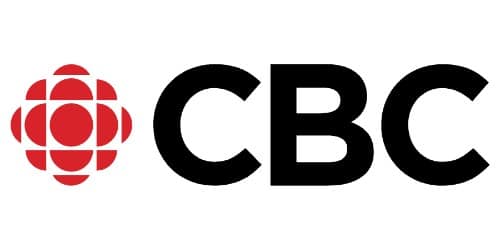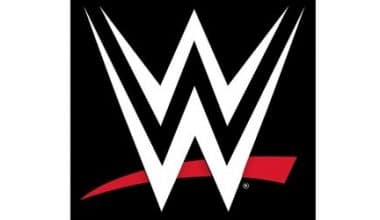CBC is the abbreviation for the Canadian Broadcasting Corporation, one of the biggest Canadian media businesses, which was founded in the middle of the 1930s and is government-owned. The corporation is involved in television, radio, mass media, and a number of web services. But how did they come up with the famous CBC logo? What does it really symbolize? And what’s the history? Let’s find out…
CBC Logo: What is CBC?
The term “CBC” stands for Canadian Broadcasting Corporation, a Canadian broadcasting corporation situated in Ottawa. It has been around since 1936.
The CBC is the oldest broadcasting organization that has retained its identity and functionality. It runs four ground stations and sends out programs in eight local languages (radio service) and five languages from other countries (international webcasting).
Read: Cowboys Logo: Did the Cowboys Change their Logo?
CBC Logo History
Its history is one of continual expansion. So, the CBC has several logos that represent the most important parts of her career. There are six of them in total.
1940 – 1958
It all started with a circle and a map of Canada. Hortense Binette, a student at the École des Beaux-Arts, came up with this version of the logo and gave it to CBC. The Dominion of Newfoundland afterward joined them. As a result, the first emblem resembled a divided globe. The North American continent was at the top, with the red chunk of Canada and the abbreviation CBC. In the middle, there were two diagonal lightning bolts, which stood for importance and a fast flow of information. Below was a blue part with the name of the radio station – Radio Canada.
1958 – 1974
This version was created by the artist Jean-Paul Boileau. During the redesign phase, he suggested drawing a map of Canada on a hemisphere with a grid of parallels and meridians. This idea was accepted by the station’s management. On top of them, inscriptions appeared with two dates: “Radio-Canada” and “CBC.” They were done in yellow, which made them catchy and eye-catching.
1966 – 1974
Hubert Tison designed this CBC logo. Also, his sign was used at the same time as the one before it, and it had to do with the change from black-and-white to color TV. But he was only seen on channels that broadcast in color. Because of its unique design, the emblem was given the name Butterfly.
The designer was tasked with creating a rainbow-colored peacock tail. He chose butterfly wings, from which stylized waves extend in various directions. The upper portion of the insignia is warm and includes burgundy, red, and yellow; the lower part is frigid and includes green, blue, and blue. In terms of size and structure, both sides are identical. In addition, there is a small black dot between them.
1974 – 1985
In 1974, there was a big change in symbolism. Because of its shape and structure, it was called The Gem and Exploding Pizza, but no one knew that. Burton Kramer, a graphic artist, created the original CBC logo. His work was so good that it became the most important and memorable thing the company had ever done. After all, all subsequent official emblems were based on it.
The logo’s fundamental notion has become kaleidoscopic. Because the circle was animated, it looked really stunning on screen. Under the trademark melody, it deviated from the center and disintegrated into several small bits. The music was country-specific and had to be a part of the branding. The circle was made up of several geometric forms and a red-orange-yellow letter “C.”
1986 – 1992
CBC adopted another logo, shaped like a cut gem, at the end of 1985 and the beginning of 1986. This version was suggested by Hubert Tison and Robert Innes. It was monochrome and comprised of either blue on white or white on blue, which was the same.
1992 – Present
The present symbol is a thematic continuation of the previous iteration. The creators just modified the hue, suggesting red instead of cobalt. Gottschalk + Ash also deleted the cross-stripe, replacing the wide blue “C” with a solid red disc. They’ve also lowered the number of geometric forms from 25 to 13, down from 25 in earlier editions.
CBC Logo: Font and Colors
It’s been interesting to see how the Canadian Broadcasting Service’s logo has changed over time. They are all brightly colored, fashionable, and one-of-a-kind. Each is based on a circle. It was first augmented by lightning, then by the earth’s hemisphere, and finally by a rainbow butterfly and kaleidoscopic balls. They were so inventive that they earned unspoken nicknames like “Butterfly,” “The Gem,” and “Exploding Pizza.”
The text was only in the first epigraph. The abbreviation was written in Foundation Sans Bold Extended, which was the basic typeface. The inscriptions, however, are still used on the radio service. There are two sorts of typefaces: FreeSet Book in the earlier logo and Mirai Bold in the current one.
The palette of all emblems is distinguished by its richness of colors. The official colors are red, cobalt blue, black, and white. There was also a rainbow color, which included yellow, orange, red, green, and blue.
CBC Logo: CBC Television
The TV channel logo was identical to the basic one. In several circumstances, though, he had his own interpretation. From 1952 to 1966, the round icon was used. At first, it had lightning and a map, and then it had a red Canada on top of a grid of the world’s geography. The TV service had two logos: the well-known one, which was colored and had a butterfly on it, and a special one for advertising that was black and white with white letters on a dark background.
Then, CBC Television featured novel symbols—circular and segmental, made up of 25 little bits. The original version was very vibrant, with red, orange, and yellow. The second was made up of the same amount of squares and triangles as the first, but it was deep blue and had a huge “C” that was similarly divided into numerous parts. Since 1992, the number of segments has been cut down to 13, and versions that only use red, white, black, and white have been seen.
The current insignia came out in 2017 and has a message and a sphere with a broken ball on it. This is the abbreviation for the “CBC” channel, which is to the right of the graphic emblem.
CBC Logo: CBC Radio One
The radio service had been around before 1997, but since then, it has expanded and started using a new name. It was divided into two parts: the basic corporate insignia in the shape of a segmentary ball with the name and the channel’s logo, which consisted of the phrase “Radio One.” They were created using a sleek serrated typeface.
In 2007, a variant appeared with rearranged pieces from the previous iteration. The CBC insignia and abbreviation were on the left, and the name of the radio service was behind the vertical bar on the right.
In 2018, the proportion of visual and text components shifted, and inscriptions took precedence. Only the emblem with a red circle remains of the drawn elements. The designers transformed the blue into black. They also modified the font.
The CBC’s History
In 1929, the Aird Commission on Public Broadcasting said that a national radio transmission network should be set up. There was a lot of worry about the growing influence of American radio broadcasting as US-based networks began to reach into Canada. In the meantime, Canadian National Railways was building a radio network to keep its passengers entertained and give it an edge over its rival, CP. The CNR was the precursor of the CBC. Graham Spry and Alan Plaunt pushed hard for the project on behalf of the Canadian Radio League. The Canadian Radio Broadcasting Commission (CRBC), which came before the CBC, was set up by R. B. Bennett’s government in 1932.
The Canadian National Railway, which is a federal Crown enterprise, set up a network of radio stations that was taken over by the CRBC. The network was used to send shows to people on its passenger trains. It mostly covered central and eastern Canada. On November 2, 1936, the CRBC was reorganized under its current name. The CRBC was a state-owned business, but the CBC was a Crown corporation that was modeled after the British Broadcasting Corporation, which went from being a private company to a statutory corporation in 1927. Leonard Brockington was the first chairman of the CBC.
For the following few decades, the CBC was in charge of all broadcasting innovation in Canada. This was due in part to the fact that, until 1958, it was not only a broadcaster but also the principal regulator of Canadian broadcasting. It used this double ability to get most of the licenses for clear channels in Canada. It launched a separate French-language radio network in December 1937. CBC brought FM radio to Canada in 1946, but a separate FM service was not started until 1960.
Read Also: NETFLIX COMPETITORS: Who are they? (Competitor Analysis & Stock)
Television broadcasts from the CBC began on September 6, 1952, with the launch of a station in Montreal, Quebec (CBFT), and a station in Toronto, Ontario two days later.
In October 1953, CKSO in Sudbury, Ontario, became the CBC’s first TV station that was privately owned. At the time, all private stations were supposed to affiliate with the CBC, a requirement that was modified in 1960-61 with the founding of CTV.
From 1944 through 1962, the CBC divided its English-language radio network into two services known as the Trans-Canada Network and the Dominion Network. The latter, which broadcast lighter programming such as American radio shows, was disbanded in 1962, while the former became known as CBC Radio. (In the late 1990s, CBC Radio was renamed CBC Radio One, and CBC Stereo was renamed CBC Radio Two.) In 2007, the latter was renamed CBC Radio 2.
On July 1, 1958, the CBC’s television broadcast was expanded from coast to coast. In 1963, the CBC’s The Forest Rangers became the first Canadian television show to be shot in color. Color television broadcasts began on July 1, 1966, and full-color service began in 1974. In 1978, the CBC was the first company in the world to use a satellite in orbit to provide TV service. This made it possible for Canada to be connected “from east to west to north.” The CBC’s purpose is to contribute to the nation’s “moral economy.”
CBC Logo: Services
News
CBC News is Canada’s biggest news network. It helps CBC Radio, CBC News Network, local evening newscasts, CBC News Online, and Air Canada’s in-flight entertainment. Recent CBC News offerings, such as news notifications sent to mobile phones and PDAs, are also becoming popular. Desktop news notifications, e-mail alerts, and digital television alerts are also available.
Radio
CBC Radio offers five distinct services: three in English, known as CBC Radio One, CBC Music, and CBC Radio 3; and two in French, known as Ici Radio-Canada Première and Ici Musique. Several CBC radio stations, most of which were on the AM spectrum, have either switched to FM or shut down completely over the years. The CBC intends to retire more CBC AM transmitters across Canada. This ambition, however, remains to be seen in light of the CBC budget cuts.
CBC Radio One and Première focus on news and information programming while also playing some music, variety shows, and comedy; in the past, they also aired some sports programming. Both of these services used to send most of their signals on the AM frequency, but many stations have moved to the FM frequency. CBC Music and Ici Musique are only available on FM, and they broadcast arts and culture programming with a concentration on music. CBC Radio 3 broadcasts independent Canadian music online and through satellite.
It also provided two shortwave services. The first, Radio Nord Québec, was transmitted to Northern Quebec on a fixed frequency of 9.625 MHz, while the second, Radio Canada International, was beamed to the United States and around the world in eight languages. Due to a lack of money, both shortwave services ended in 2012, and the Sackville transmitter site was shut down in 2014.
Read Also: STARBUCKS LOGO: Evolution, Significance, Branding Models & Tips
In addition, Radio One stations in St. John’s and Vancouver used shortwave relay transmitters to broadcast at 6.16 MHz. Some have suggested that the CBC/Radio-Canada develop a new high-power shortwave digital radio service to provide more effective coverage of remote locations.
In November 2004, the Canadian Radio-television and Telecommunications Commission (CRTC) received an application from the CBC, Standard Broadcasting, and Sirius Satellite Radio for a license to start a satellite radio service in Canada.
On June 16, 2005, the CRTC approved three applications for satellite radio service, including one for subscription radio. Sirius Canada debuted on December 1, 2005, with a variety of CBC Radio stations, including the new services CBC Radio 3 and Bande à part.
In some regions, particularly national and provincial parks, the CBC also runs an AM or FM transmitter that rebroadcasts weather alerts from the Meteorological Service of Canada’s Weatheradio Canada service.
Long-Range Radio Strategy
The Canadian Broadcasting Corporation (CBC) and the Canadian Radio-television and Telecommunications Commission (CRTC) worked together to create the Long-Range Radio Plan (LRRP). The goal was to find out which FM frequencies the CBC would likely need to reach the most Canadians with its radio services. When it comes to its LRRP, the CBC is not bound by any rules or expectations.
The CBC said that about 99% of Canadians could listen to Première Chaine (now called Ici Radio-Canada Première) and CBC Radio One. It said that it will keep its radio service going, but that it has no plans to cover more areas. It said that the LRRP was a tool for planning and would no longer be used.
Given that the government is giving the CBC less money and that most Canadians can get Première chaîne and Radio One, the Commission thinks it is a good idea for the CBC to keep the coverage it already has and stop the LRRP. As a result, the Commission approved the CBC’s motion to end the LRRP.
Radio Guide
Beginning in 1981, CBC Radio introduced the monthly magazine Radio Guide, which provided CBC Radio program listings as well as feature content like profiles of singers and writers and behind-the-scenes, peeks at CBC programming.
The magazine was available as a subscription publication as well as a newsstand title. Due to CBC’s economic constraints, the magazine began taking paid advertising from outside clients in 1984; in 1985, due to more budget cuts, the magazine was canceled as an independent edition and instead became a supplement to Saturday Night. The magazine was sold to Core Group Publishers of Vancouver in 1988 and remained in this format until 1997 when it was canceled due to a diminishing subscriber base.
Television
The Canadian Broadcasting Centre in Toronto acts as the CBC’s English-language master control point.
The CBC maintains two national broadcast television networks: CBC Television in English and Ici Radio-Canada Télé in French. Both of these networks, like private broadcasters, sell advertising but feature more Canadian-produced programs.
All CBC TV stations are owned and run by the CBC, with the exception of local programming and other regional differences. For example, CBC North stations in Nunavut, the Northwest Territories, and the Yukon air an extra newscast in the Inuktitut language and a weekly Cree program, and CBET-DT in Windsor changes its non-primetime schedule at different times because of program rights conflicts with stations in Detroit.
Both the English and French networks of the CBC used to have some private stations that were run by other groups. Most of them, though, have either been bought by the CBC and shut down as part of the switch to digital TV or moved to other networks and program providers. The sole remaining privately owned affiliate of any CBC-owned network is Ici Radio-Canada Télé affiliate CKRT-DT in Rivière-du-Loup (part of a triplestick that also includes private affiliates for Quebec’s two private networks).
Read Also: CHARGERS LOGO: Facts That You Didn’t Know About The Chargers Team
One of the most popular shows is the weekly Saturday night broadcast of NHL hockey games. The program is known as Hockey Night in Canada in English and La Soirée du hockey in French. Both series premiered in 1952. The French broadcast stopped in 2004, but until 2006, certain Saturday night games made by RDS were shown at the same time on Radio-Canada stations outside of Quebec. The network lost the rights to the show’s theme music after a long lawsuit filed by the song’s composer and publishers. This made the network look bad in public. Rogers Media purchased the NHL’s exclusive national media rights in 2013, though Rogers would make a deal with the CBC to license the Hockey Night in Canada name for use in its coverage of Saturday-night games and sell a version of the broadcasts to the CBC at no cost.
The CBC also entirely owns and runs three specialized television channels: the news channels CBC News Network and Ici RDI, as well as the French-language network Ici Explora. It also owns a majority share of the French-language arts channel ARTV and the documentary channel.
Every year, the CBC provides viewers with interactive on-demand television programming via digital-cable services such as Rogers Cable.
Children’s programming is broadcast on CBC Kids, a commercial-free preschool programming block. On ICI Radio-Canada Télé, the children’s programming block is known as Zone Jeunesse.
Online
The CBC Hamilton news operation for Hamilton, Ontario, was started in May 2012 as part of a commitment to strengthen its service in “underserved” cities. With the Hamilton area already covered by CBC Radio and CBC Television in Toronto, the outlet focuses solely on digital material, including a market-focused part of the CBC News website. When important stories happened in the city, CBC Hamilton correspondents would sometimes write reports for the CBC’s TV news.
The company also started CBC Music in 2012, which is an internet radio service with 40 music-related channels, including the audio streams of CBC Radio 2 and CBC Radio 3.
The CBC introduced CBC Listen, a successor to the CBC Music platform, in October 2019, which includes the CBC’s radio, music, and podcast production.
The CBC’s Documentary Channel, a digital television station, broadcasts feature-length documentaries.
Miscellaneous
CBC Records is a Canadian record label that sells albums of CBC content, like live concert recordings and transcripts of news and information shows like the Massey Lectures. Music albums on the label, primarily in the classical and jazz genres, are distributed in commercial record stores across Canada, while CDs incorporating spoken word programs are primarily distributed by the CBC’s own retail merchandising operations.
As Enroute Journal reports, the CBC provides news, business, weather, and sports information on Air Canada’s in-flight entertainment.
What Is the CBC Logo Supposed to Be?
According to Kramer, the logo symbolized the concept of “Canada broadcasting to the world,” with the central form being the letter C, which stands for Canada; the radiating elements of the C representing broadcasting; and the blue circle the logo was set in representing the world.
Who Created CBC Logo?
The CBC logo, which has been affectionately referred to as the “exploding pizza,” was designed by Canadian design innovator Burton Kramer in 1974.
What Does Channel CBC Stand For?
The Canadian Broadcasting Corporation (CBC) is a government-funded media conglomerate that airs programming across a wide variety of Canadian platforms, including AM and FM radio, TV networks in English and French, two national cable TV channels, and shortwave radio.
When Did the CBC Logo Change?
The CBC rebranded in the early 1990s, although the logo has remained unchanged since then. The central icon used to be a lowercase letter “c.” But in the 1990s, they made it more like a doughnut by closing the circle.
Related Articles
- 2023 BEST WEBSITES FOR REAL ESTATE NEWS (Updated!)
- Best easy advertising campaign guide (+free strategy)
- Overwatch Logo: The Meaning & Evolution of the Game Brand
- Reverse Merger Stocks: Overview & Examples
- TV ADVERTISING: Advantages, Disadvantages, Costs, Types (Detailed Guide)
- RADIO ADVERTISING: Costs, Types, Advantages & Disadvantages (All You Need)






